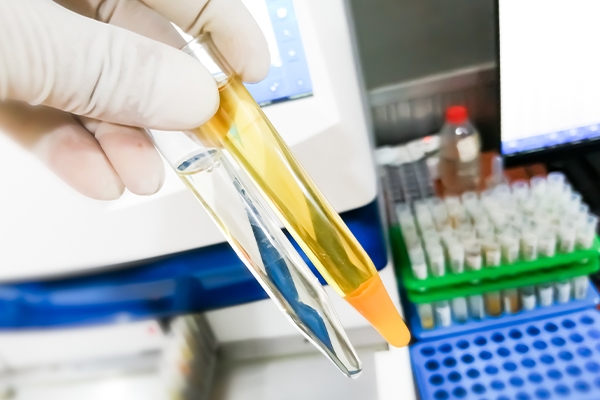Feel a Burning Sensation When Urinating? Beware of UTI Symptoms!

Have you ever felt a stinging and hot sensation when urinating? Or do you often feel the need to urinate, but only a little urine comes out? If yes, be careful; you could have a urinary tract infection (UTI).
Urinary tract infection (UTI) is an infection that attacks the organs in the urinary system, namely the bladder, urethra, ureters, and kidneys. Most cases of UTI occur in the bladder, which is called a lower UTI.
UTIs are usually caused by bacteria from feces that enter the urinary tract. Bacteria enter through the tube that carries urine out of the body (the urethra).
Things that increase the risk of bacteria entering the bladder include sex, pregnancy, and conditions that block the urinary tract, such as kidney stones and enlarged prostate in men, and constipation in children.
Poor genital hygiene and dehydration can also increase the risk of infection.
The incidence of UTIs in women is higher than in men. This is because the female urinary tract has a shorter urethra than men. In addition, women's urinary organs are closer to the anus and vagina, so microorganisms can easily enter the urinary tract.
According to estimates by the Ministry of Health of the Republic of Indonesia, the number of UTI sufferers in Indonesia reaches 90–100 cases per 100,000 population per year, or around 180,000 new cases per year.
Although it doesn't always cause symptoms, UTI can be characterized by several complaints, such as:
- There is an intense urge to urinate, but little comes out.
- Pain or burning feeling when urinating.
- Frequent urination.
- Urine is red or bright pink.
- Pelvic pain, lower abdomen, or waist.
- Sloudy, dark, or strange-smelling urine.
In some cases, patients may also experience shivering, fatigue, fever, or pelvic pain along the side of the body below the ribs.
Myths and Facts About UTI

Myth: Only women can get UTIs
Fact: Although UTIs are more common in women, men can get UTIs too. Women's anatomical structure makes them more vulnerable. However, men who have certain medical conditions, such as an enlarged prostate, can also get UTIs.
Myth: UTIs Only Cause Symptoms in the Urinary Tract
Fact: A UTI can cause symptoms such as fever, chills, fatigue, and lower back pain if the infection spreads to the kidneys (pyelonephritis).
Myth: Holding in urination does not raise the risk of UTI
Fact: Holding in urination for too long can increase the risk of UTI because bacteria have more time to multiply in the bladder.
Myth: Cleaning the vagina with toilet paper from back to front is not dangerous
Fact: Cleaning the vagina from back to front can move bacteria from the rectal area to the urethra. This action increases the risk of a UTI. It is recommended to always clean from front to back.
Myth: Drinking lots of water doesn't help with UTIs
Fact: Drinking plenty of water can help dilute urine and push bacteria out of the urinary tract. This can help prevent and reduce UTI symptoms.
Myth: All pain when urinating indicates a UTI
Fact: Pain when urinating can be caused by various conditions, including sexually transmitted infections (STIs), irritation, or kidney stones. Medical tests are required for a proper diagnosis.
Myth: UTIs only occur in adults
Fact: UTIs can occur at any age, including children. In children, symptoms may be less specific, such as a fever, for no apparent reason.
Myth: Antibiotics are always needed to treat UTIs
Fact: While antibiotics are often necessary to treat bacterial UTIs, some mild UTIs may resolve with home remedies, such as good hydration and regular bladder emptying. However, consultation with a medical professional is always recommended.
Myth: Good personal hygiene is enough to prevent UTIs
Fact: While good personal hygiene is essential, many other factors influence UTI risk, including genetics, sexual activity, catheter use, and certain medical conditions.
Tips to prevent UTIs

- Drink water at least two liters per day.
- Reduce consumption of sweet drinks or foods because they can encourage bacterial growth.
- Empty your bladder frequently. Urinating four to eight times a day is normal. Don't hold in urination.
- Urinate immediately after sexual intercourse.
- Always clean from front to back after using the toilet.
- Keep the genital area dry.
- Avoid wearing tight clothing because it can create a damp environment that encourages bacterial growth. Try wearing loose clothing and cotton underwear to prevent moisture from accumulating around the urethra.
UTI diagnosis

If you have symptoms of a UTI, call your doctor. The doctor will review your symptoms and perform a physical examination. To confirm a UTI diagnosis, doctors usually test urine.
Culture can help identify the cause of the infection and help your doctor choose a treatment.
**
You are not alone in experiencing a UTI. This infection is common, especially in women. Don't be embarrassed to seek medical help.
Immediately consult a doctor or other health care provider to get the right diagnosis and treatment. Take antibiotics as prescribed and follow all your doctor's instructions to ensure the UTI heals completely and prevents complications.
With proper treatment, UTIs can be treated quickly and effectively. Don't hesitate to ask the doctor at GWS Medika Clinic, a health clinic in Jakarta, if you have questions or concerns regarding your UTI.



